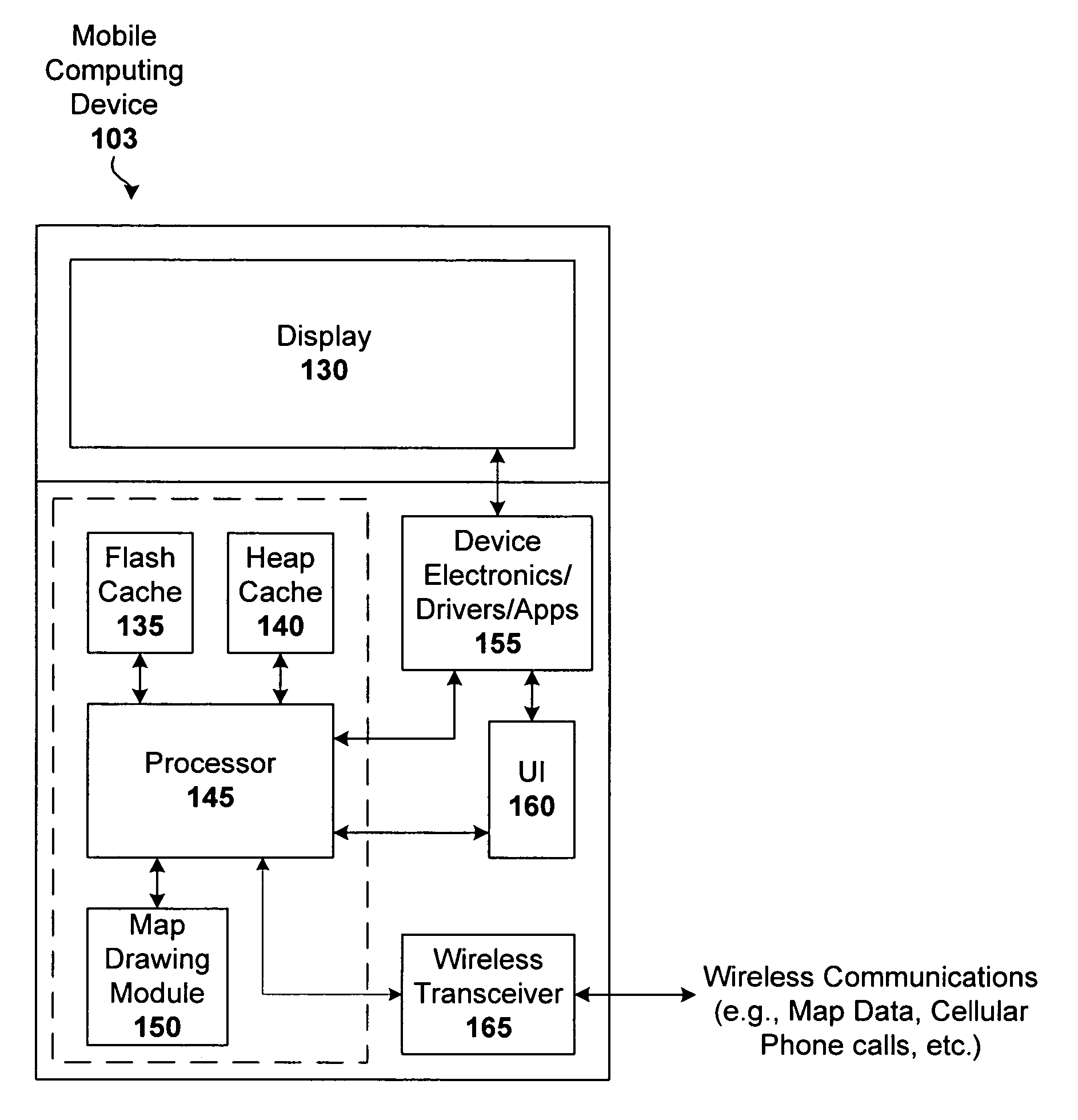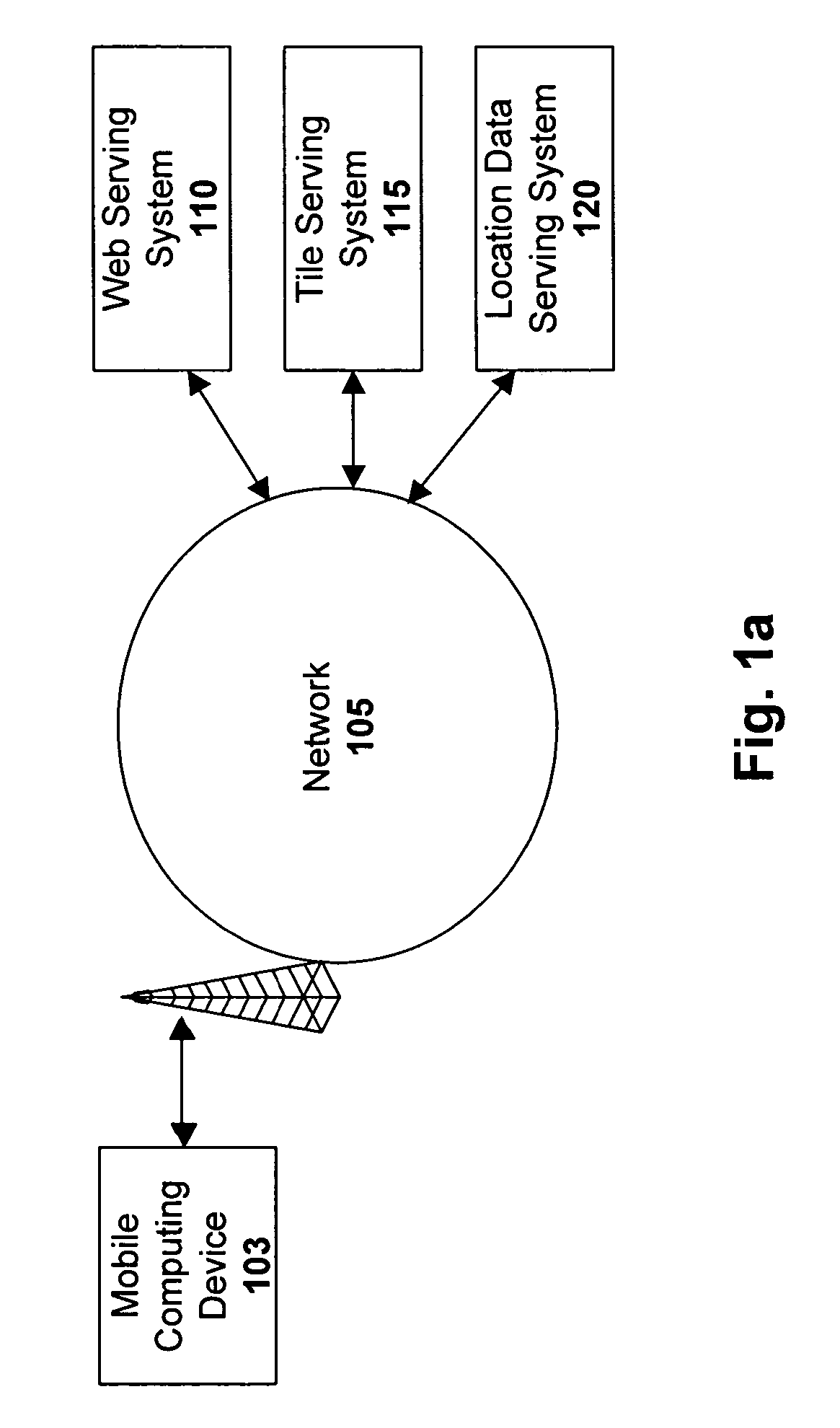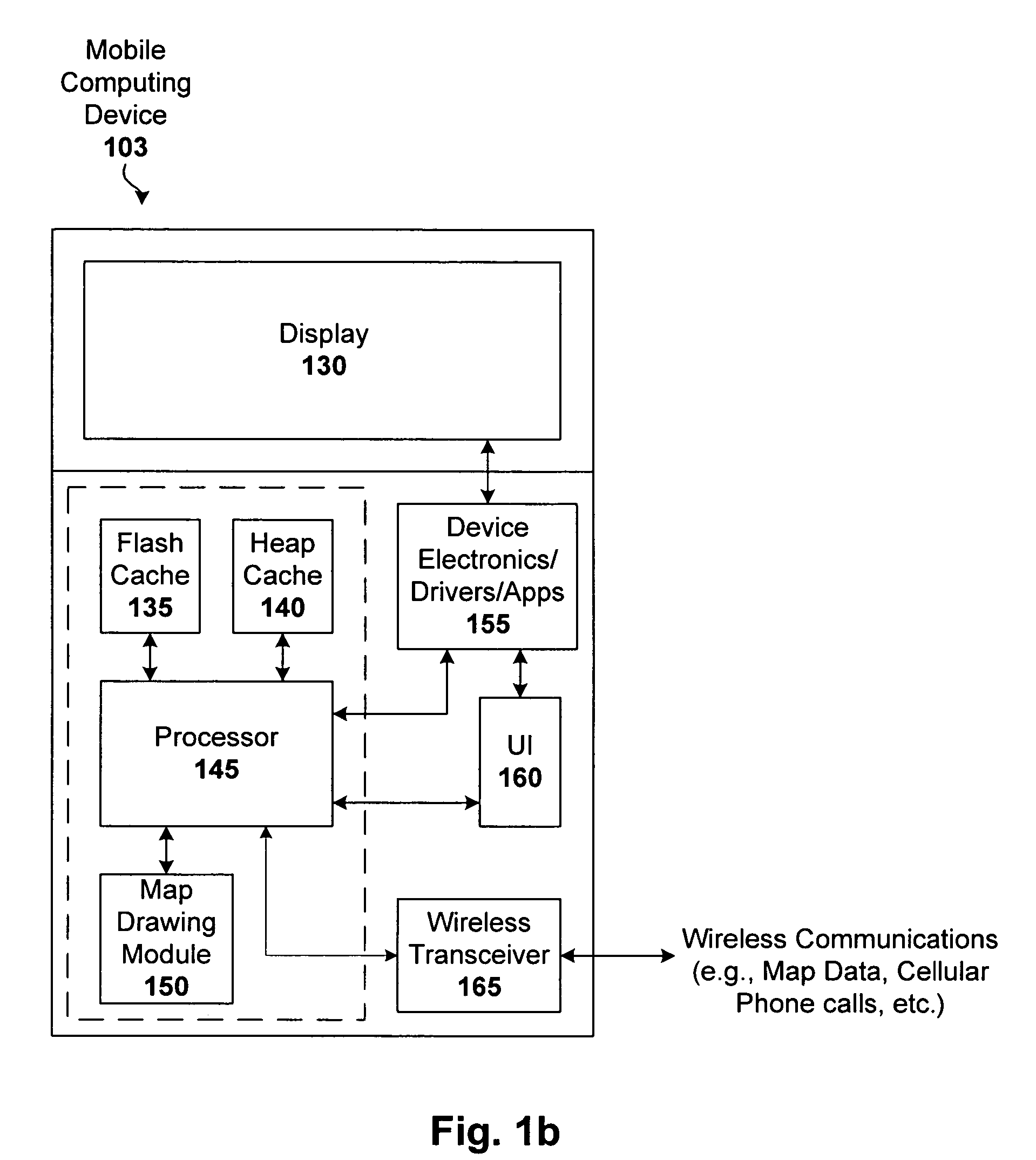Techniques for displaying and caching tiled map data on constrained-resource services
a technology of resource services and map data, applied in the field of digital mapping systems, can solve the problems of slow current mobile network, high latency, and generally unconstrained resources of computers, and achieve the effect of reducing the number of required data bytes
- Summary
- Abstract
- Description
- Claims
- Application Information
AI Technical Summary
Benefits of technology
Problems solved by technology
Method used
Image
Examples
Embodiment Construction
[0018]Techniques are disclosed that enable users to access and use digital mapping systems with constrained-resource services and / or mobile devices (e.g., cell phones and PDAS). In particular, latency of a mapping application on high-latency and low-throughput networks is minimized. One example embodiment of the technique utilizes volatile and non-volatile storage of the mobile device to cache pre-computed map images (e.g., map tiles). An asynchronous cache can be used to prevent delays caused by potentially slow non-volatile storage. Meta-data about each map image and usage patterns can be stored and used by the cache to optimize hit rates.
[0019]General Overview
[0020]As previously explained, current wireless networks are both slow and suffer from high-latency. Thus, reducing latency equates to improving user experience, as users will not tolerate long delays in viewing maps. With this in mind, note that a user will often view the same map areas, and that caching of the map data loc...
PUM
 Login to View More
Login to View More Abstract
Description
Claims
Application Information
 Login to View More
Login to View More - R&D
- Intellectual Property
- Life Sciences
- Materials
- Tech Scout
- Unparalleled Data Quality
- Higher Quality Content
- 60% Fewer Hallucinations
Browse by: Latest US Patents, China's latest patents, Technical Efficacy Thesaurus, Application Domain, Technology Topic, Popular Technical Reports.
© 2025 PatSnap. All rights reserved.Legal|Privacy policy|Modern Slavery Act Transparency Statement|Sitemap|About US| Contact US: help@patsnap.com



